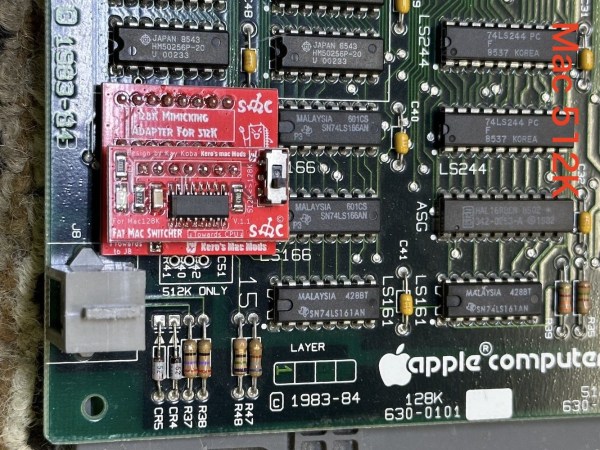Have you ever looked in a doll house and said “I wish those dolls had a scale replica of a 1984 Macintosh 128K that could be operated by USB?” — well, us neither, but [Nick Gillard] gives us the option with his 63mm tall Pico-mac-nano project.
As you might imagine, this project got its start with the RP2040-based Pico Mac project by [Matt Evans], which we covered

before. [Nick] saw that, built it, and was delighted by it enough to think that if the Mac could run on such tiny hardware, how small could build a fully-usable replica Mac? The answer was 63 mm tall– at 5.5:1, that’s technically under the 6:1 scale that Barbie operates on, but if we had such a dollhouse we’d absolutely put one of these in it. (You just know Barbie’s an Apple kind of girl.)
The size was driven by the screen, which is a 2″ TFT panel with 480 x 640 pixel native resolution. Here [Nick] cheats a tiny bit– rather than trying to rewrite the PicoMac to output 640 x 480 and rotate the screen, he keeps the screen in portrait mode and drives it at 480 x 342 px. Sure, it’s not a pixel-perfect output, but no LCD is going to be a perfect stand in for a CRT, and who is going to notice 32 pixels on a 2″ screen? Regardless, that set the height of the computer, which is built around the portrait display. A highly detailed, and to our eyes, accurate replica of the original Macintosh case was printed to fit the LCD, coming in at the aforementioned 63mm tall.
Unfortunately this means the floppy drive could not be used for micro SD access– there is an SD card reader on this unit, but it’s on the back, along with a USB-C port, which is roughly where the mouse and keyboard ports are supposed to be, which is a lovely detail. Also delightful is the choice of a CR2 lithium battery for power, which is a form factor that will look just a bit familiar if you’ve been inside one of these old Macs.
[Nick] has posted the 3D designs and modified pico mac firmware to a GitHub repository, but if you’re looking for a charming desk ornament and don’t have the time to build your own, he will also be selling these (both kits and fully assembled units) via 1bitrainbow, which is the most delightfully retro web store we’ve seen of late.
If Classic MacOS isn’t good enough for you, how about linux? You won’t enjoy it as much, but it will run on the RP2040.













